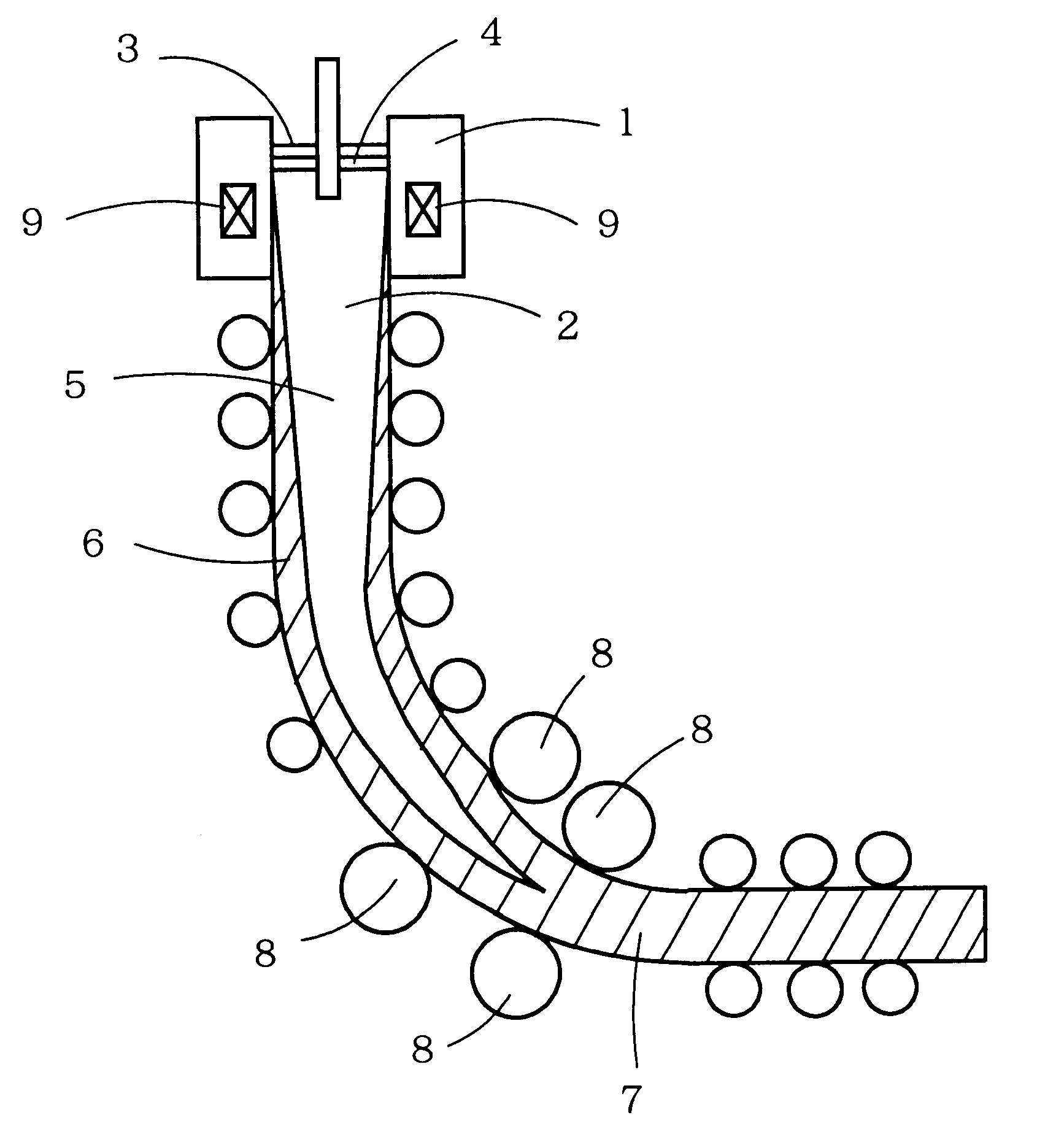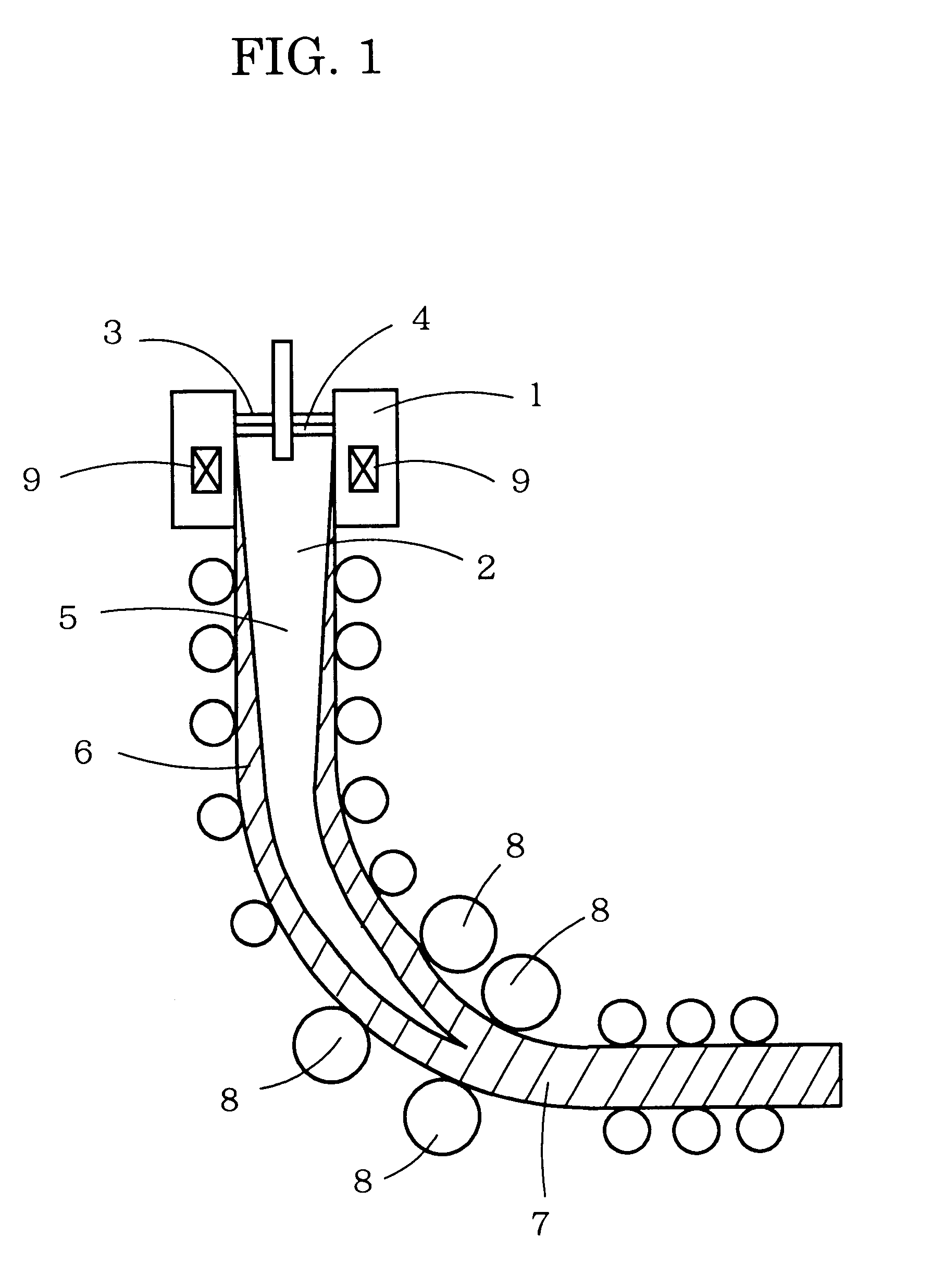Method for continuous casting of steel
a technology of continuous casting and steel, applied in the field of continuous casting of steel, can solve the problems of inability to practice a thin slab casting technique, inability to increase the thickness of a material used in a submerged entry nozzle, and easy melting loss of the nozzl
- Summary
- Abstract
- Description
- Claims
- Application Information
AI Technical Summary
Benefits of technology
Problems solved by technology
Method used
Image
Examples
Embodiment Construction
In an apparatus of the constitution shown in FIG. 1, casting tests were performed by use of a vertical-bending-type continuous casting apparatus which comprises a slab reduction apparatus and an electromagnetic brake applying an electromagnetic force on molten steel flow from a submerged entry nozzle in a mold. The length of a vertical portion was 1.5 m, and the radius of a curved portion was 3.5 m.
Magnetic field intensity of the electromagnetic brake (molten steel flow regulation apparatus) was 0.3-0.5 tesla (T). The term "magnetic field intensity" refers to a magnetic field intensity at the position which is the coil center of the electromagnetic brake and the center in a thickness direction of the mold. The slab reduction apparatus was provided at the position 2.8 m away from the meniscus of molten steel.
Hypo-peritectic steel shown in Table 1 was cast into a slab with a thickness of 90 mm and a width of 1,200 mm by use of a mold whose inlet and outlet are of the same thickness. I...
PUM
| Property | Measurement | Unit |
|---|---|---|
| Temperature | aaaaa | aaaaa |
| Temperature | aaaaa | aaaaa |
| Length | aaaaa | aaaaa |
Abstract
Description
Claims
Application Information
 Login to View More
Login to View More - R&D
- Intellectual Property
- Life Sciences
- Materials
- Tech Scout
- Unparalleled Data Quality
- Higher Quality Content
- 60% Fewer Hallucinations
Browse by: Latest US Patents, China's latest patents, Technical Efficacy Thesaurus, Application Domain, Technology Topic, Popular Technical Reports.
© 2025 PatSnap. All rights reserved.Legal|Privacy policy|Modern Slavery Act Transparency Statement|Sitemap|About US| Contact US: help@patsnap.com


